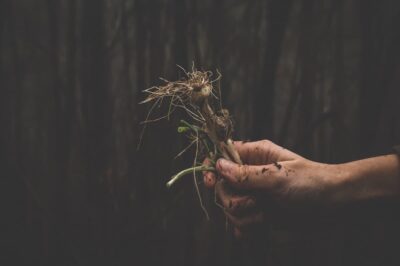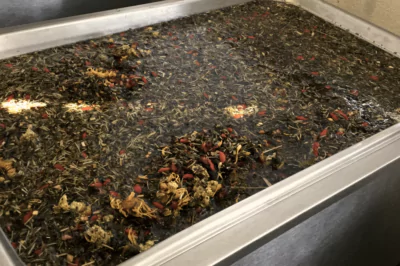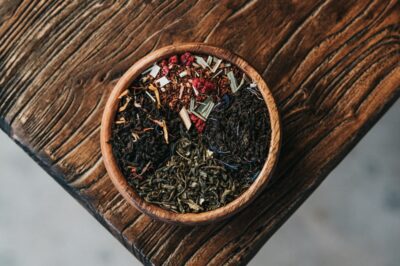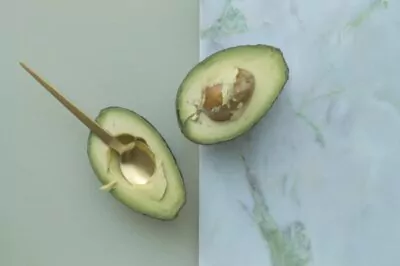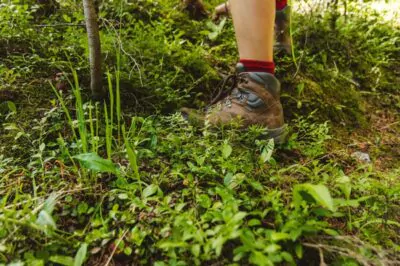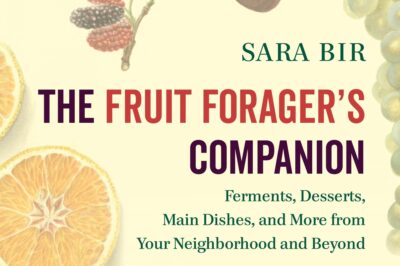Table of Contents[Hide][Show]
Wildcrafting is the practice of gathering plants and herbs from the wild. If the term evokes pioneering images of the American frontier, that’s certainly accurate; Daniel Boone, for example, both made and lost a fortune on ginseng.
But wildcrafting was obviously practiced in North America for millennia before the first Europeans arrived, and it’s particularly associated with ancient Asian medicinal traditions. Ethical wildcrafting can be done for edible, medicinal, or cosmetic purposes. It’s also known as foraging, and its practitioners are called wildcrafters, foragers, or herbalists.
our core values
Ethical wildcrafting has a special place in our hearts here at Annmarie Skin Care. Some of the herbs and honey used in our products are foraged in the mountains – wildcrafted, rather than harvested on a farm. Wildness is among our core values, and truly living wildly was our team’s collective resolution for 2018.
If you yearn for more wildness and beauty in your life, wildcrafting could be an excellent hobby. But you’ll need to go about it the right way. This blog shows you how!
why ethical wildcrafting?
At first glance, wildcrafting seems to be perfectly in harmony with nature. What could be more natural, resourceful, and sensible than finding your own herbs and plants in the wild, where they grow?
It’s actually a little more involved than that. You need to be careful not to take more than the habitat can support; in other words, your harvest needs to be sustainable. You also want to make sure you’re respecting the property rights of private and government landholders, as well as any relevant laws.
protecting at-risk species
Several plant species offer cautionary tales about the impact of unethical wildcrafting. Ginseng, which has been used for centuries for everything from boosting energy to reducing stress to moderating blood sugar, has been overharvested in parts of the U.S. to the point that the plant’s very survival is threatened and several states have had to implement ginseng management programs.
Arnica, which ranks among the most popular wildcrafted plants due to its supposed painkilling and anti-inflammatory properties, is on the watch list of plant species at-risk in the U.S. and Canada and on the decline in Europe, where several countries have moved to protect it. Over the past decade or so, Ramps—onion-like plants that typically can’t be grown on farms – have become so popular with American chefs, particularly those favoring locally grown food, that some wild Ramp populations have become stressed.
ethical wildcrafting—in 5 easy steps!
1. BE SUPER CAREFUL
This is a combination of the precautionary principle and the campsite rule: first do no harm, and leave things better than you found them. Wildcrafting is an important responsibility; if you get it wrong, you could damage or destroy plants and harm the local ecosystem. You could also put yourself and others in danger (e.g., by handling or ingesting poisonous plants) and possibly run afoul of the law.
Filling in holes after harvesting roots, hiding discarded leaves and plant parts, replanting root crowns, and scattering seeds are a just few of the ways in which you can leave a harvested area in better condition than you found it. As you gain knowledge and experience, be thoughtful about how and with whom you share it. One of the ethical dilemmas for seasoned wildcrafters is balancing the desire to educate and include newcomers with the obligation to steward and protect the land, which could suffer as the number of wildcrafters grows.
2. KNOW THE PLANTS
First and foremost, make sure you know the rare and endangered plant species in your area and don’t harvest them. United Plant Savers, a well-respected organization, maintains an updated watch list of at-risk plant species in the U.S. and Canada; even beginning wildcrafters should know it well.
Native plant societies, conservation groups, regional groups, and state environmental departments may also offer guides to endangered and threatened plants. A simple rule of thumb: when in doubt, don’t pick it.
Find Substitutes
In some cases, more common plants can be substituted for rare ones. For example, Oregon grape can be used in place of the extremely depleted and fragile Goldenseal (which should never be harvested). Other no-go species, in addition to the aforementioned American ginseng and arnica, include Echinacea, osha, black cohosh, and peyote.
It’s also important to know whether the plant is a perennial or annual, as this affects how much and what parts of the plant you can harvest without jeopardizing its survival; and whether you’re encountering the plant near the limits of its geographical range, in which case you’d want to be especially careful and possibly avoid it altogether.
3. KNOW THE LAND
For starters, you want to make sure that the land itself is healthy. Land near busy roads and power lines is often exposed to toxic pollutants and pesticides. If the land once hosted an industrial site, it’s best to steer clear. If you’re wildcrafting near a stream, make sure that you know the source.
You’ll want to pick selectively and minimally from many different spots in a stand, so that you’re essentially browsing with a minimal footprint. You also want to make sure you don’t interfere with any wildlife foraging in the area. As you get more familiar with a piece of land over time, observe how your activities affect it as well as any natural environmental changes that have occurred. Look for opportunities to steward and replenish the land, and modify or cease wildcrafting altogether if necessary.
4. KNOW THE RULES
You don’t need to be a wildcrafter or a genius to know that trespassing on private property is a no-no. On public lands, wildcrafting is often prohibited or strictly limited. The National Park Service bans all types of foraging from America’s national parks but allows park superintendents the latitude to permit what they deem reasonable. When exceptions are made, it’s usually for personal, non-commercial use only.
As obvious as it sounds, make sure that you know the law. Many an aspiring wildcrafter has discovered the law only as a result of breaking it. Obtain any relevant permits, observe all requirements (e.g., maintaining a certain minimum distance from roads and trails), and carry ID with you at all times. Punishments can be surprisingly stiff; in California, for example, violations are punishable by $1,000 fines and up to six months in jail.
5. TAKE A LITTLE
Because the health of the local ecosystem is always top priority, it’s important to err on the side of caution when harvesting plants in the wild. If you’ve determined that harvesting would be both ethical and sustainable, take only as much as you could reasonably use and no more than 10 percent. Allow the oldest and largest plants to remain; their genes are the hardiest and most successful, so it’s important for the health of their species that they continue to reproduce.
Given the pressures wildcrafting can place on plant populations, one of the best things you can do is to seek out less popular but equally valuable plants that grow in abundance. This is especially true for some weedy, invasive plant species; dandelions, for example, have both nutritional and medicinal value and are widely available at many times of the year. Blackberries are so hardy that they’re almost impossible to wipe out.
Finally, don’t just think about wildcrafting as taking from nature. Replant areas you harvest from and pay special attention to helping to re-establish at-risk species.
Many who practice ethical wildcrafting also emphasize the importance of mindset, believing that it’s essential to strengthening the symbiotic relationship that exists between you and the earth as well as the earth’s own regenerative abilities. For some, wildcrafting is less about the plants you harvest and what you do with them than it is “a commitment to deepen your connection to the natural landscape and take responsibility for its regeneration.”
more information
Educate yourself!
If wildcrafting sounds up your alley, several resources can help you learn more. The aforementioned United Plant Savers (abbreviated “UpS” to avoid confusion with the delivery service) works to protect the long-term sustainability of native medicinal plants of the U.S. and Canada. UpS offers a wealth of information, including a Species At-Risk Assessment Tool, as well as a membership program whose proceeds support the research, education, and conservation of native medicinal plants and their habitats.
If you’re still a book reader (you are, aren’t you?), two that come highly recommended are Rosemary Gladstar’s Medicinal Herbs and Backyard Medicine. (In the Small World Dept., Rosemary Gladstar is the Founding President of UpS.)
Edible plant database
Plants For A Future maintains a database listing the “edible, medicinal and other uses” of over 7000 plants. PFAF points out that despite there being 20,000 species of edible plants in the world, less than 20 species – roughly one-tenth of one percent – now provide 90 percent of our food; broadening this list can ease the burden on a planet already stressed by chemically-intensive agriculture and climate change.
Sustainability in action
Internationally, wildcrafting falls under the purview of the World Forestry Congress, an gathering of the world’s forestry sector held every six years by the United Nations’ Food and Agriculture Organization. The most recent WFC, held in Durban, South Africa, in 2015, produced the “Durban Declaration” affirming forests’ role in issues as diverse as food security, biodiversity, and climate change.
From this perspective, ethical wildcrafting directly supports the sustainable consumption and natural resource management goals of the United Nations’ 2030 Agenda for Sustainable Development.
